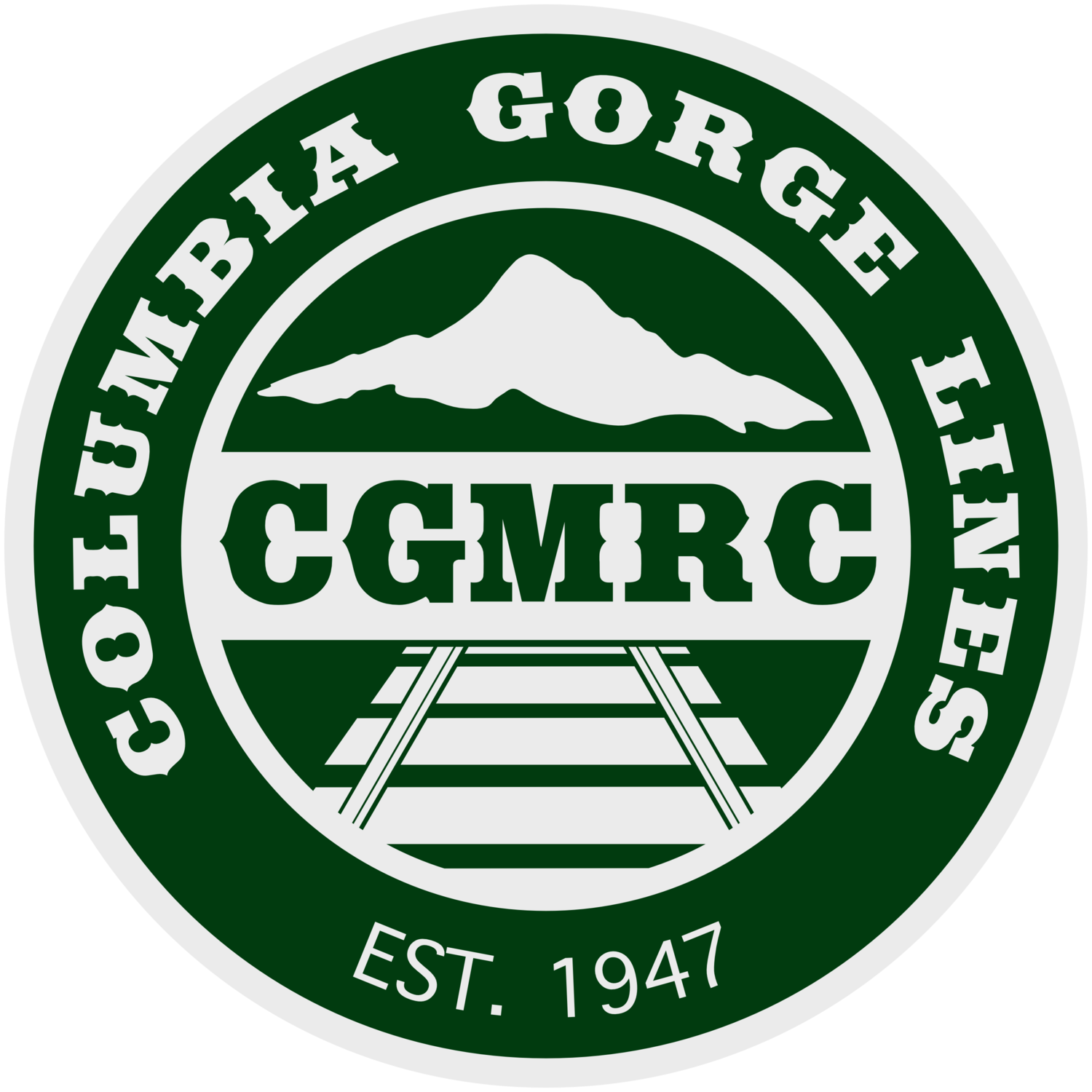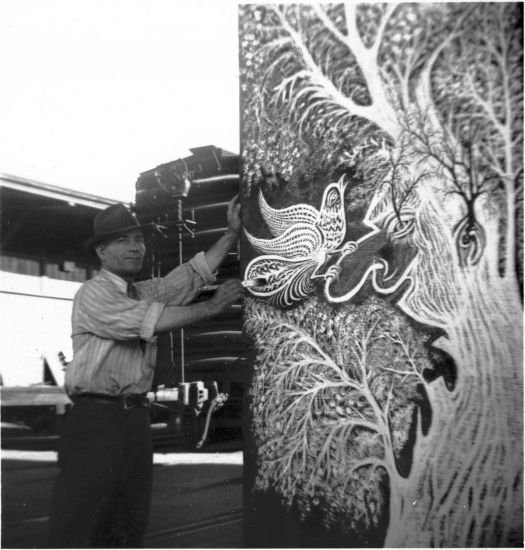
Points of Interest
Portland Union Station
Portland Union Station is the oldest major passenger terminal on the West Cost. Designed by Van Burnt & Howe in 1885 construction began in 1890 and was completed in 1896. The signature piece of this iconic train station is the Romanesque Revival Clock Tower, which stands at 150 feet tall. While the station has undergone numerous remodels and renovations over the years it still looks much the way it did in 1930. Notably the neon sign that flashes Go By Train was installed in 1948 but went dark in 1971. With the help of two local non-profit groups, however, money was raised for repairs and new neon tubes and the sign was returned to service in 1985. The station was added to the National Registry of Historic Places in 1975. Orloff and Glenda Bockel built our model of Portland Union Station and while it is 1:87 scale (HO Scale) it has been reduced in length and width to better fit with our layout. The model before you represents the station as it would have looked in 1954.
Pullman Porters
In the years following the Civil War (1861 – 1865) Chicago business man George M. Pullman started hiring thousands of African Americans to serve white passengers aboard his companies luxury railroad sleeper cars. While the job conditions were poor with low pay and sometimes racist customers the Pullman porters helped to catalyze the Great Migrations (approx. 1916 – 1970) of African Americas from the rural south to the North, Midwest, and Western states helping to form the African American middle class and eventually launch the Civil Rights Movement of the 1950s and 1960s.
Vista House
It stands as a monument to the pioneers of the Oregon territory and as a rest stop observatory to those traveling the scenic route of the Historic Columbia River Highway. The construction of the Vista House was started in December of 1916. Built upon Crown Point (Designated a Natural National Landmark in 1971), Vista House was funded primarily through tax dollars from Multnomah County and private funds. Edgar Lazarus designed the Vista House with the German architecture style known as Art Nouveau in mind while a native Italian craftsman did the foundation and retaining wall stonework. Vista House was added to the National Registry of Historic Places in 1974.
Multnomah Falls
While it was formed 15,000 years ago during the Missoula floods a legend from the Multnomah tribe says that the falls were formed when a young woman sacrificed herself for her people. A plague was ravaging the area and after jumping from the cliff the plague stopped and the falls started flowing. Lewis & Clark would later note the falls in 1805 during their journey West. Always a tourist attraction for its majestic grandeur, the Oregon Railway and Navigation Company added a stop at the falls in 1884, which continued until World War II. The surrounding area was developed in the early 20th century with the inclusion of a pathway, the iconic viewing bridge, and the adjacent lodge. All would be later placed on the National Registry of Historic places in 1981.
Wigwam Burner
A wigwam, beehive, or teepee burner is a large steel structure typically 30-60 feet tall, cone shaped, and topped with a steel grating. These odd looking structures can be seen throughout the Pacific Northwest and in more rural parts of Canada. Feed by conveyor belts or Archimedes screws they were used as a place burn wood product waste such as sawdust and wood scrap. With no filtration system and smoke venting directly to the surrounding atmosphere, use of Wigwam burners has fallen out of favor and has been illegal in Oregon since 1971. Now wood waste products are commonly found in pellet fuel, particle board, and, mulch.
The Lovejoy Columns
In what might be the earliest, if not the first, examples of graffiti in Portland, the Lovejoy Columns, are the legacy of one man. Athanasios Efthimiou Stefopoulos, who went by Tom. Tom came to the United States of America in 1910 with the hopes of becoming an artist and sending money to his family back in Greece. For most of his life, however, he spent his time as a night watchman for the SP&S Railway. Tom passed the long and idle hours at this job by painting images of Greek mythology and American imagery on what use to be the support columns of the Lovejoy Viaduct and is estimated to have done about a dozen murals between 1948 and 1952. The viaduct was demolished in the late 1990s during the Pearl district’s expansion but a group of local artists and architects were able to have 2 columns saved and moved to their new location in a courtyard on NW 10th Ave between Everett and Flanders.
Wyam (Celilo Falls)
Wyam, otherwise known as Celilo Falls, was a centuries old cultural center for Native Americans along the Columbia River Gorge. Just north of The Dalles it was primarily used as a spot to catch giant Chinook and other food salmon. Half a dozen tribes’ maintained permanent villages in the area that hosted as many as 5,000 people who would trade, feast, play games, and participate in religious ceremonies every spring when the water flow over the falls exceeded ten times that of Niagara falls. Fishing was regulated by the elders and chiefs, it would only start after the First Salmon ceremony, begin and end each day at the sound of a whistle, was not permitted at night, and upon the unfortunate death of a fisherman, if pulled into the water, would cease for the day. Sadly, when the gates of the Dalles dam were closed on March 10th 1957 the falls were submerged in a little over four hours. While tribes were compensated for fishing sites the fishing rights were contested and sadly the tribes economic base was shattered. Raymond Matheny who worked for the US Fish and Wildlife service compiled much of the documentation we have today between 1951 and 1952







